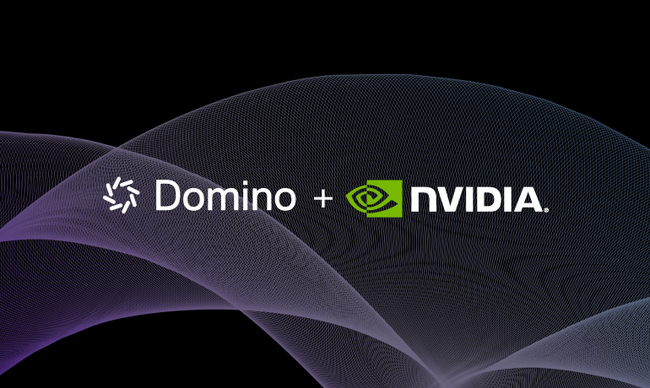Unlocking the Power of Data Visualization in Data Science with Domino
Domino2024-10-22 | 14 min read
Introduction
What if a financial institution could stop fraud before it happens? In today’s high-stakes environment, real-time dashboards that track anomalies and suspicious patterns are essential, not just helpful, for preventing substantial losses and maintaining system integrity. However, many organizations face significant hurdles: fragmented tools, limited interactivity, and scalability issues. These obstacles cripple their ability to visualize and leverage data effectively, leading to delayed decisions, operational inefficiencies, and missed opportunities to thwart fraud.
This is where Domino Data Lab steps in, providing a comprehensive solution with its unified platform. Domino seamlessly integrates diverse visualization tools, enforces robust governance, and fosters real-time collaboration. In this article, we’ll explore how Domino revolutionizes data visualization, empowering data scientists across industries, through real-world use cases.
The Challenges of Data Visualization
Data visualization is indispensable for data scientists, yet several hurdles often stand in the way of truly effective insights:
The problem of fragmented tools
Many data science teams grapple with a patchwork of visualization tools, each specialized for a narrow task. This leads to significant inefficiencies. Some tools produce excellent static reports but lack interactive features, while others struggle with large datasets or offer limited customization. Analysts waste precious time switching between platforms, disrupting their workflow and hindering their ability to extract key insights. This fragmentation inevitably slows down analysis and increases the risk of errors.
Limited interactivity hinders exploration
Static reports and charts offer a one-dimensional view of data. This makes exploring trends, identifying outliers, and uncovering deeper insights incredibly difficult. Data science is an iterative process; without interactive tools, refining hypotheses and exploring different perspectives becomes a tedious and time-consuming process.
Scalability issues with growing data
As datasets expand and become more complex, many conventional visualization tools falter. Performance degrades, visualizations become sluggish, and teams are often forced to downsample data or resort to workarounds, which can compromise the integrity and depth of their analysis.
Governance and compliance gaps
A lack of a centralized system for managing and tracking visualizations poses a major challenge to ensuring consistency, reproducibility, and regulatory compliance. Organizations in highly regulated industries like healthcare and finance require a meticulous, auditable record of their visual analytics workflows to meet stringent compliance requirements.
How Domino Simplifies Data Visualization
Domino Data Lab dramatically simplifies data visualization by providing a streamlined, enterprise-grade platform that natively supports both open-source and proprietary tools. This not only enhances interactivity and enforces governance but also accelerates data exploration through advanced capabilities like augmented insight generation and comprehensive visualization support. By minimizing the complexities of tool management and integration, Domino empowers data scientists to focus on what matters most: uncovering insights and driving impactful decisions.
Revolutionizing Insights with Augmented Generation
Domino takes data exploration to the next level, enabling users to generate insights faster and with less manual effort, through its augmented insight generation features.
- Automated discovery and narration of findings: Domino automates the process of finding, visualizing, and narrating insights using a comprehensive suite of tools. Users can leverage JupyterAI and VSCode GitHub Copilot for AI-assisted code generation, automating and enhancing visualizations. Integration with SAS Visual Analytics, DataRobot’s AutoInsights, MATLAB’s AI-driven visualization tools, and Stata’s automated reporting features further streamlines workflows, minimizing manual effort and accelerating the discovery of key insights.
- Guided exploration with natural language: Domino supports guided exploration through visualizations, search, and natural-language query technologies, with AI-generated narration to interpret results. JupyterAI and VSCode GitHub Copilot further automate data exploration and visualization with AI-assisted code generation. Integration with SAS Visual Analytics, DataRobot’s AutoInsights, MATLAB’s AI-driven tools, and Stata’s features provides natural-language-generated insights, anomaly detection, and predictive analytics. Domino’s pluggable framework enables seamless integration with AI-powered search and natural-language query tools, allowing users to ask questions, generate visual insights, and receive AI-driven interpretations.
Comprehensive Visualization Support
Domino offers a rich array of visualization options, giving data scientists the flexibility they need:
- Full range of visualizations: Domino supports both standard and advanced visualizations right out of the box. Users can create custom visualizations and dashboards using bundled open-source tools like R, Python, Julia, and Octave. Integration with SAS Visual Analytics, MATLAB’s visualization suite, Stata’s graphing tools, and DataRobot AutoInsights enables sophisticated visualization and automated insight generation.
- Custom visualization capabilities: Domino’s built-in environments support open-source libraries for creating custom visualizations (Python, R, Julia, Octave, etc.). Users can build and share custom environments with specific client libraries for unique visualization needs.
- Specialized functionality (e.g., Geospatial Analytics): Domino provides out-of-the-box support for geospatial analysis, including map creation and spatial analytics, with open-source options (Python, R, Julia, Octave, etc.).
Control theory transformations, mappings, and signal processing filters
Domino supports a wide range of control theory transformations, mappings, and signal processing filters through open-source tools (R, Python, Julia, Octave, etc.) and curated packages that come pre-installed with the platform. These packages provide functionality for transformations such as Fast Fourier and Laplace Transforms. Additionally, users can leverage proprietary tools (SAS, Stata, MATLAB) hosted in Domino to take advantage of its collaboration and governance features. Domino's extensible architecture also allows companies to securely use additional open-source and proprietary packages.
Unified visualization framework
Domino offers a unified visualization framework that supports a wide range of both standard and advanced visualizations. This includes heatmaps, scatterplots, bar charts, histograms, box plots, pie charts, and Sankey diagrams. Teams can leverage either the built-in visualization tools or work natively with popular libraries such as Plotly, IPython widgets, Dash, and Shiny to construct interactive, highly customized dashboards. This single, cohesive framework eliminates the need for disparate tools, streamlining the visualization process and improving efficiency.
Out-of-the-box visualization libraries
Domino Data Lab supports a wide range of visualization tools and libraries, allowing users to create various types of plots, charts, and interactive visualizations. The platform supports popular libraries such as Plotly, Matplotlib, and seaborn.
Interactive dashboards
Domino enables the creation of interactive dashboards using tools like knitr and htmlwidgets. Users can generate fully hosted, interactive dashboards directly from their code, including network graphs and time series charts.
Large-scale visualizations
The platform supports the use of CanvasXpress for creating large-scale, interactive visualizations:
- Ability to handle and visualize large datasets efficiently.
- Support for complex chart types like treemaps and stacked bar charts.
- Combine multiple data sources into a single visualization.
Visualization in workflow
Domino Data Lab provides visualization throughout the data science workflow:
- Data scientists can explore and visualize data directly within Domino's collaborative workspace.
- Visualizations can be easily shared and reproduced across team members.
- The platform supports the entire lifecycle, from data exploration to model deployment, with visualization capabilities at each stage.
Case study: Plotly use for machine learning
- Challenge: Teams needed interactive tools to explore machine learning models efficiently.
- Solution: Using Plotly enabled users to build dynamic K-Means clustering visualizations and compare classifiers using subplots.
- Impact: Faster iteration cycles and clearer insights.
- Watch the case study
Advanced Density Estimation Support
Domino natively supports various density estimation methods, including KDE (Kernel Density Estimation) and DDE (Dynamic Density Estimation). This support is enabled through a range of open-source Python and R libraries and packages. Domino’s pluggable framework allows for the integration of additional density estimation tools and frameworks.
With these powerful capabilities, Domino frees data scientists from tool limitations and allows them to focus on the analysis, not the plumbing.
Real-time insights & AI-assisted visualizations
Domino empowers users to gain real-time insights through AI-powered search and natural language queries, dramatically accelerating the speed of data analysis. Instead of manually writing code, analysts can generate instant insights by asking direct questions. Domino also automates insight generation by detecting correlations, clusters, and anomalies, allowing teams to quickly identify key trends and patterns. Embedded reports and interactive dashboards enable seamless collaboration, ensuring everyone is on the same page.
Scenario analysis & model monitoring
Domino’s “what-if scenario analysis” allows data scientists to explore predictive models dynamically, helping businesses anticipate potential outcomes and make proactive decisions. Additionally, real-time model monitoring dashboards track accuracy, drift, and compliance, ensuring models remain reliable and perform as expected. Time series visualization tools further empower teams to analyze trends and forecast outcomes efficiently.
Case Study: Allstate – fraud detection with real-time dashboards
- Challenge: Fraud detection models took too long to generate insights.
- Solution: Domino provided real-time fraud detection dashboards with automated alerts.
- Impact: Reduced fraud detection time by 40%, leading to faster and more accurate claims processing.
- Read the case study
Geospatial & density-based visualization
Domino supports geospatial analysis tools like GeoPandas, Folium, and Kepler.gl, enabling teams to visualize location-based data effectively. It also provides tools for density estimation, cluster visualization, and hierarchical data representation.
Case Study: Climate Corp – precision agriculture
- Challenge: Farmers needed real-time weather and soil condition insights.
- Solution: Domino’s geospatial tools helped analyze planting and harvesting data, offering more precise recommendations.
- Impact: Increased crop yield predictions and improved farming efficiency.
- Read the research
Collaboration, reporting, and governance
Domino enhances collaboration by supporting multiple export formats, including PDF, PPT, and HTML. The built-in file viewer handles images, videos, and audio files, ensuring analysts can work with diverse data types. Governance features ensure audit trails and version control, helping organizations maintain regulatory compliance. These robust features enable seamless teamwork and ensure data integrity, critical for regulated industries.
Case study: US Navy – AI governance & policy compliance
- Challenge: The Navy needed a scalable AI governance framework with visualization capabilities.
- Solution: Domino provided compliance dashboards and risk assessment tools, ensuring all AI-driven decisions adhered to strict policies.
- Impact: Streamlined governance processes and improved regulatory compliance.
- Read the case study
Conclusion & Next Steps
Data visualization is more than just making charts—it's about driving better decisions. Domino provides a centralized, enterprise-grade solution for interactive, scalable, and AI-powered visualizations. Whether your organization operates in finance, healthcare, or insurance, Domino empowers teams to collaborate, automate insights, and make faster, more informed decisions. With Domino, data scientists can overcome tool fragmentation, limited interactivity, and scalability issues to unlock the true potential of their data.
Want to see Domino in action? Request a demo today.
Domino Data Lab empowers the largest AI-driven enterprises to build and operate AI at scale. Domino’s Enterprise AI Platform provides an integrated experience encompassing model development, MLOps, collaboration, and governance. With Domino, global enterprises can develop better medicines, grow more productive crops, develop more competitive products, and more. Founded in 2013, Domino is backed by Sequoia Capital, Coatue Management, NVIDIA, Snowflake, and other leading investors.



